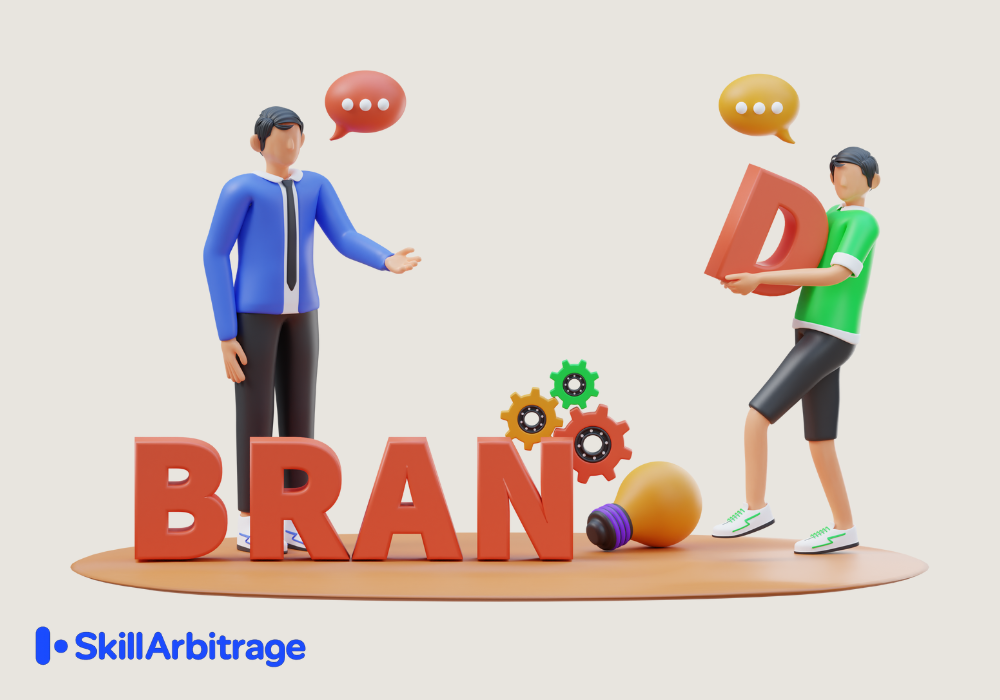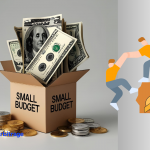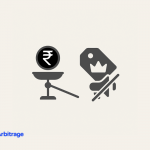This blog takes a close look at contrarian copywriting, the power of being contrary, which can make any brand stand out in a crowd. It explores how going against the grain can be a powerful positioning tool, especially for small brands trying to break through the noise. This piece is a valuable resource for content writers, marketers, and strategists who want to help small businesses build loyalty, trust, and memorability without spending a lot by leveraging the power of bold, unconventional messaging.
Table of Contents
Introduction
When I was in school, a new admission always sparked curiosity. In class IX, a new girl joined and immediately became a subject of attention and uncomfortable speculation, led by the class bully.
The new girl was more in the spotlight because she was truly a bookworm and as far from a social butterfly as possible. Normally, this would make any new student feel alienated, but this new admission was different; she embraced her “nerdy” tag and started a book club with other nerdy girls.
Soon her name was uttered with respect rather than ridicule, and the bullies left her alone. Her book club didn’t just win over the bullies, it built a tribe. The book club continued as her legacy long after she graduated from school.
In this memory lies a valuable lesson of life as well as marketing: you can earn respect by standing up for yourself and standing on the opposite side of power. In marketing, we call it the power of contrarian branding: standing out by standing firm.
Want to find a tribe?
Pick an enemy and start the fight.
Sounds intense, but it works because humans are hardwired to trust people like them and question those who aren’t.
This is a deep-rooted bias, Ingroup vs Outgroup Bias in action. We feel safer, smarter, and more “right” when we’re part of a group that shares our values, especially if there’s a clear “them” to rebel against.
Great brands don’t just sell identity. They sell a rallying cry. They say: “We’re not like them. We’re for people like you.”
That’s what contrarian copywriting is all about. Not trying to please everyone. But taking a side, even if it’s unpopular. This is a great strategy for small brands on small budgets, as this lets a brand build a strong identity without burning money on ad spends.
What is a contrarian copy?
Contrarian copy is when a brand breaks away from the safe, sugary tone of typical marketing and speaks directly to the misfits, underdogs, and rebels who are tired of being ignored or patronized.
It taps into the same instinct that made you:
- Root for the villain in a movie
- Roll your eyes at that big agency pitch
- Choose the street vendor over the overpriced café
It makes the customer say: “Finally, someone gets me.” When they do, brands rake in profits. Take a look at how this one thing done right can improve engagement and memorability, and drive conversions faster.
Many Indian brands use it very effectively to build an identity from scratch.
Famous brands that use this
In a world dominated by perfect-looking ads and sugar-coated brand promises, anti-hero brands are cutting through the noise. These are the brands that dare to challenge the status quo, the ones that don’t care about awards or glossy packaging, but speak directly and honestly to their audience.
Contrarian copywriting is the secret weapon they use. It’s bold, unpolished, and unapologetically real.
1. MBA Chaiwala
Not your typical CEO. And proudly so.
From dropping out of college to building a pan-India tea empire, MBA Chaiwala has established a solid identity. The brand’s messaging is loud and clear:
“We’re not corporate. We’re not elite. We’re for the hustlers.”
Result? A cult-like following of college students, job quitters, and ambitious small-towners who see themselves in him.
2. Candid skincare
Most skincare brands:
“Glowing skin in 10 days with our miracle peptide tech.”
Candid:
“Your skin has pores. Deal with it.”
They mock the unrealistic filters and fake-perfect influencers. Their copy says:
“We’re not here to fix you. We’re here to free you.”
That’s contrarian power.
3. Anti-agency agencies
The rise of D2C-focused “anti-agency” agencies is no accident. These agencies stand against the ”big” agencies worth millions and their fancy approaches,
They write copy like:
- “No jargon. No retainers. No excuses.”
- “We don’t pitch. We perform.”
- “Built by marketers who hated working in agencies.”
They don’t compete on credentials. They compete in cultural rebellion.
Why this works: the psychology behind contrarian copy
Ingroup vs Outgroup bias works on the principle that we trust people like us and question those who aren’t. Here’s how it specifically works.
- We automatically favor people like us (ingroup)
- We’re skeptical of those outside that group (outgroup)
Contrarian brands:
- Create an “ingroup” for the underrepresented
- Position the mainstream as outdated or inauthentic
- Tap into shared frustration or identity
- Build trust through shared defiance
It’s how people say:
“I didn’t just buy a product. I joined a movement.”
This is very powerful. And here’s how you harness it.
How to apply contrarian copywriting: a detergent brand example
Imagine that you are launching a new washing detergent. Here’s how to apply anti-hero, contrarian copy that cuts through the industry noise.
Step 1: Identify the enemy
Ask: What do customers dislike about existing detergent brands?
- Corporate jargon and marketing fluff
- Unrealistic ads with models doing laundry in chiffon sarees
- Overpromised benefits like “99.9% germ kill”
- Legacy brands that charge extra for “smart clean technology”
Write this down. These are the things your brand pushes against.
- Corporate jargon
- Overhyped claims
- Unrealistic advertising
- Pseudo-scientific features
Step 2: Flip the script
Take the industry’s usual tone and go in the opposite direction.
Example:
Normal Detergent Copy:
“Now with advanced stain-lift technology for ultra-white clothes!”
Contrarian Detergent Copy:
“Your shirt doesn’t need to blind the neighbours. It just needs to be clean.”
Normal Detergent Copy:
“Used by 10 million households across India.”
Contrarian:
“Not made for everyone. Just the ones who hate ads with actresses in chiffon.”
Normal:
“99.9% germ removal in one wash!”
Contrarian:
“We don’t fight germs with sci-fi. We fight dirt. Like you asked.”
Step 3: Build the ingroup
Create a sense of belonging. Use language that makes your target audience feel seen and part of something more honest.
“This is for the…”
“This is for the ones who do laundry after office. Not for choreographed smiles in TV ads.”
“We’re not like…”
“We’re not like the ‘99% germ-free’ gang. We’re the ‘don’t-smell-like-socks’ gang.”
“You’ve probably heard…”
“You’ve probably heard how other brands ‘fight 100 types of stains.’ We just fight the ones your kid brings from the playground.”
This kind of copy doesn’t chase perfection, it reflects real life. That’s how contrarian brands build trust.
Here’s a comparison chart of the three types of brands we have discussed till now.
Here are some templates that you can use right away to start building your brand voice in the contrarian way.
Templates: contrarian copy you can use
First, let’s understand exactly how a contrarian copy differs from a conventional one.
Here is a summary of the key differences between contrarian and conventional copy. In the right side find the traits of conventional copy while the left side have the traits of contrarian copy.
Now let’s see some examples of contrarian copy that drives conversions fast across industries.
For About Us pages:
SAAS: “We’re not a startup that brags about funding. We’re a bootstrapped crew who wakes up at 6AM to fix real problems.”
Startups: “No vision decks. No culty LinkedIn posts. Just real people, solving real problems, for folks like you.”
For Ads:
Anti agency-agency: “Still paying ₹8,000/month for a logo and lorem ipsum? We’re not that agency.”
Skincare: “We don’t have influencers. We have customers who DM us screenshots of their skin healing.”
For landing pages:
Tech: “This page won’t auto-scroll or serenade you with animations. Because you’re not here for drama. You’re here for results.”
SAAS: “If you’re tired of overpriced software with 17 features you never use, welcome to the simpler way.”
The takeaway
Safe is forgettable. Controversial is memorable. And if you want brand loyalty, not just sales, you have to stand for something your audience cares about.
Even if it means going against the grain.
So go ahead. Burn a few bridges. Say what others won’t.
Because in a sea of shiny sameness… Anti-heroes win.
FAQs
1: What is contrarian copywriting, and how is it different from traditional brand messaging?
Contrarian copywriting is all about challenging the dominant narratives in your industry. While traditional copy tends to polish every sentence to sound aspirational, professional, or mass-friendly, contrarian copy intentionally breaks those rules. It’s blunt, witty, and often self-aware, showing your audience that you get their frustrations with the usual brand noise. It wins trust by sounding more like a person and less like an ad.
2: Isn’t anti-hero branding risky for mass-market products like detergent?
Yes, it’s risky — but that’s also why it works. In oversaturated categories, most products blend into one another. An anti-hero brand grabs attention by doing the opposite of what’s expected. It doesn’t chase perfection or overpromise. It tells the truth in a refreshing way, which today’s skeptical consumer often finds more persuasive than a glossy pitch. In short, the biggest risk is sounding like everyone else.
3: How do I identify the “enemy” my audience relates to?
The enemy isn’t always a competitor — it’s often a shared frustration. In the detergent space, it might be ads that treat laundry like a beauty contest. For a tech product, it might be bloated features no one asked for. Talk to your users. Scroll through Reddit threads, Amazon reviews, and Twitter rants. What makes them roll their eyes? That’s your enemy. Your copy should punch that in the face — gently or directly, depending on your tone.
4: How can I use free AI tools to write contrarian copy?
Free AI tools like ChatGPT or Notion AI can be powerful partners in this process. Start by feeding them examples of cliché industry copy, then prompt them with tasks like: “Rewrite this in a brutally honest tone” or “Flip this into anti-hero brand copy.” Ask follow-ups like, “Now make it sound like it hates corporate buzzwords.” AI won’t get the voice perfect in one go, but it’s a great starting point for brainstorming and punchy rewrites — especially if you refine the prompts creatively.
5: Does contrarian copywriting work for B2B brands too?
Definitely. In fact, B2B copy is often more riddled with jargon and safe-speak than B2C. That makes contrarian writing even more effective. Saying something real, human, and unexpected immediately sets your brand apart. For instance, instead of “streamlined integration for enterprise systems,” you might say, “No more 87-tab spreadsheets. Just results.” Even serious buyers appreciate honesty and clarity over fluff.







 Allow notifications
Allow notifications
